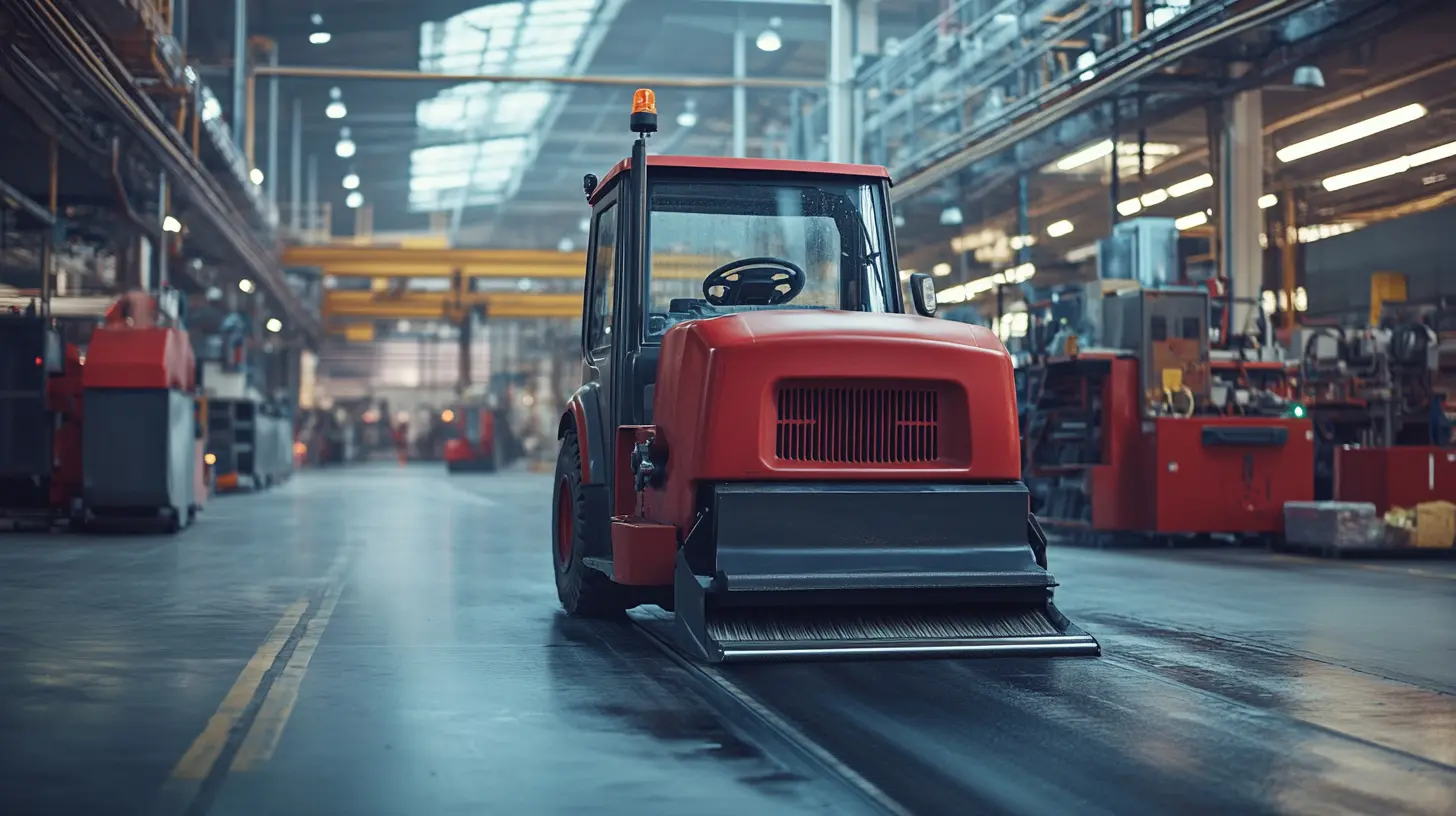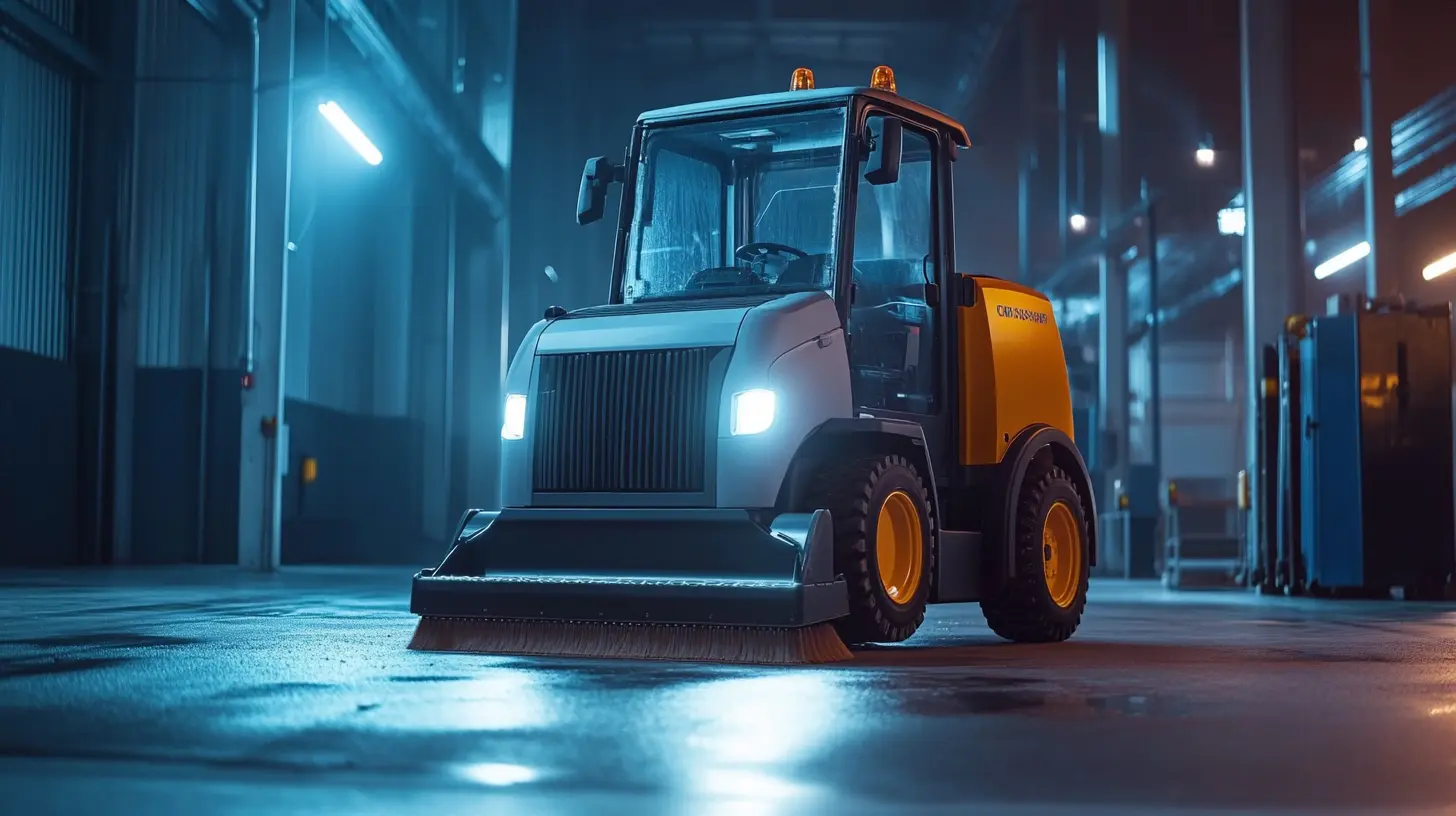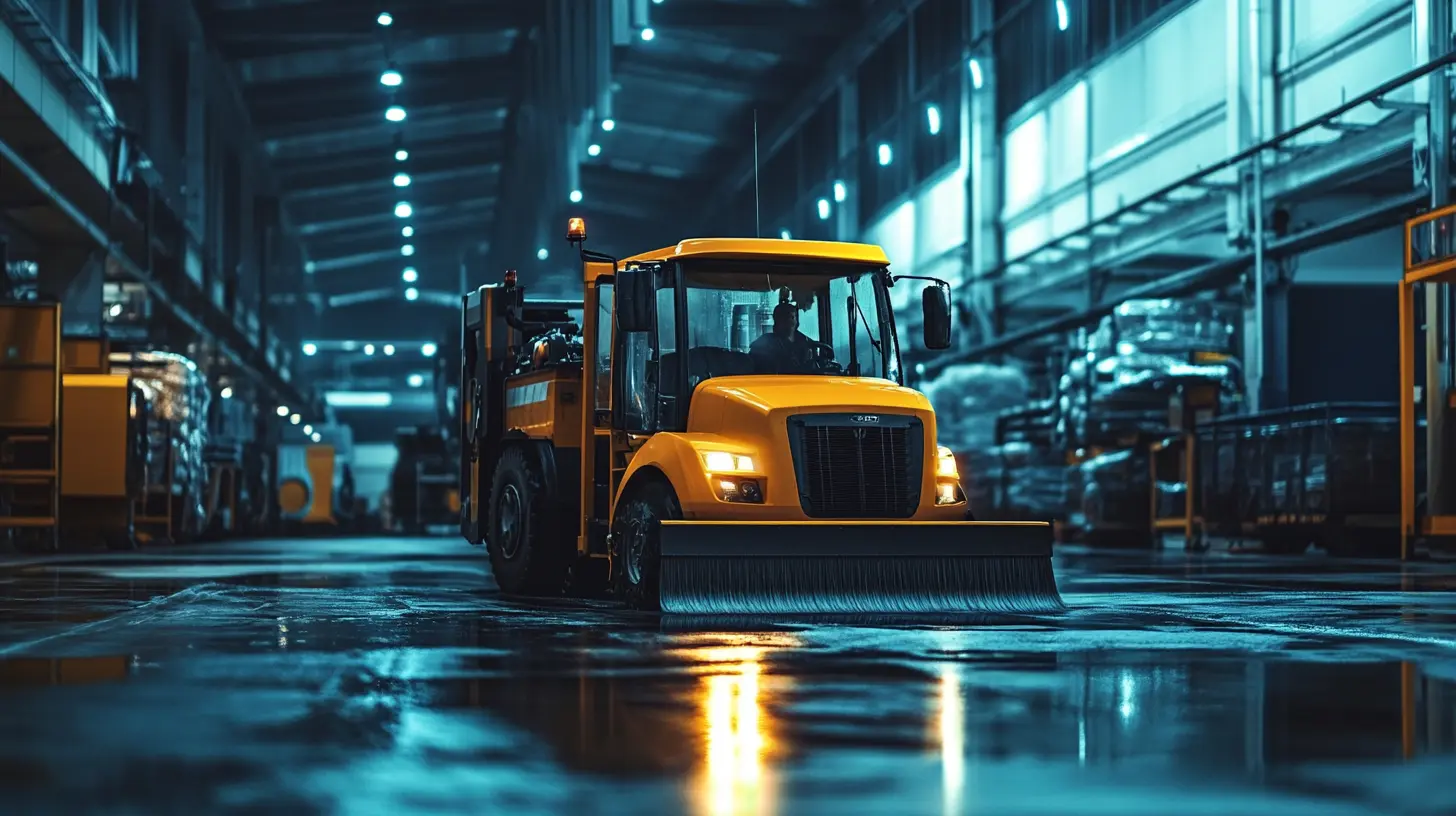Leave Your Message
In today's very fast world, it could be safely asserted that cleaning solutions have to be the most efficient and effective. Global industrial sweeper markets which were valued at nearly $2.5 billion in 2021 would tend to grow some miles further due to the sharp rise of awareness of hygiene and safety standards from one sector to another. With the great interest of industry corporations in enhancing operational efficiency and maintaining clean working environments, the desire for more advanced industrial sweepers has grown formidably. Businesses need to innovate in their industrial sweeper sourcing strategies to remain competitive and match the newfound expectations of their clientele.
Anhui Shuojie Environmental Equipment Co., Ltd. recognizes the importance of suitable cleaning equipment for various industries. This dynamic enterprise is dedicated to developing innovative cleaning solutions, including commercial floor scrubbers, sweepers, and vacuum cleaners, to meet various needs of its customers on a global scale. With the proper sourcing techniques for industrial sweepers, companies can, in addition to improving their cleaning process, work toward environmental and workplace safety. Thus, they are poised to play a major role in the ever-growing market for cleaning equipment.

Industrial sweeper global sourcing must center on key markets to allow for proper decision-making. The environmental cleaning industry is presently in vogue; thus, cities around the globe have been making greater efforts toward improving public spaces; therefore, it is vital for suppliers to know the regions where industrial sweepers are in high demand. The evolution of markets presents opportunities for new players with effective outreach strategies. The recent public bidding notice for sanitation and upholstery works by the authorities in Botou City, Hebei Province, is a clear indication of the increased governmental investment in urban cleanliness. This trend implies that a huge market for industrial sweepers is being opened up in China along with a global demand for effective cleaning solutions. These types of announcements are important for companies wanting to source sweepers to determine market needs and maybe potential clients or partners in up-and-coming regions. Additionally, an understanding of local preferences and regulations is a major factor in the sourcing process. Different markets may establish certain criteria regarding environmental sustainability or machine specifications. By examining these differences, suppliers meet these criteria in product development and market positioning, assuring that they are tailored to fulfill the unique demands of each market they touch upon.

It is very significant to know the different types of industrial sweepers and their specific purposes, especially in terms of cleanliness in these environments. A recent study from Allied Market Research states that the global market for industrial sweepers would reach almost $4 billion by 2026. This growth is based on the rate of CAGR of 6.8% which was established from the "year 2019" and would be attributed to the need for more effective and environmentally friendly cleaning solutions for warehouses, manufacturing areas, and outdoor spaces.
Among the different industrial sweepers walk-behind sweepers have earned a preference for being very versatile. This machine has been categorized in small areas and has been highly recommended for routine maintenance; thus, it is very apt for retail and small warehouse environments. Ride-on sweepers are applicable to covering much larger stretches, with increased productivity and reduction of cleaning time. Research data has it that ride-on sweepers can sweep up to 200,000 square feet midst an hour. This is definitely a mark of the operational efficiency improvement as far as larger organizations are concerned.
Modern products are made with different features and designs baring the traditional types of models. Hence, most of these machines are now automated, and robotic sweepers have emerged, operating so that one can always have even and regular cleaning. The robotic segment is likely to have a boom as reported by Market Research Future, due to the turning around of technology and also due to the increased inclination towards reduced-labor solutions. However, such novelties increase the effectiveness of floor maintenance and upholds along the trend of making industrial operations understandable through smart technology. Therefore, staying in the know about the very large spectrum of industrial sweepers that fits into different contexts becomes so very critical.

In sourcing industrial sweepers, a company today has to consider research and collaboration with reputable manufacturers and suppliers. Just recently, international events have shown rocketing speed towards their central purpose, for example, the China International Aviation and Aerospace Exhibition. It lures so many buyers who come from every country toward a common goal: craving advanced products. Innovation on product showcase by a vendor, of course, needs consideration before procurement professionals find their correct alternative of suppliers.
A connection established in major exhibitions is a significant factor to consider in sourcing. Next up will be the international procurement and supply management forum, which will allow networking opportunities with potential movers in the industry and bring insights into trends and developments in the industry. There is also this initiative of going the international way in searching new global resources, as big corporations are looking for diversifying their supply chain. It presupposes that ground research regarding possible suppliers' credentials and reputation should be conducted.
These and many other leading brands have taken part in developing international collaborative procurement and sourcing alliances with promising future prospects for improved synergy in sourcing. They have taken several initiatives, most of which are in international procurement bases or trade fairs, which not only increase the opportunities available for exchange of information but also lend trust among businesses. Engaging in international and domestic players would definitely lead to getting better quality products and new technological advancements in industrial sweeping solutions from both the manufacturer and end user perspective and aspects.

It is very important to assess the quality standard and approval regarding the acquisition of international industrial sweepers. The sweeper industry has international standards like ISO 9001, which is mainly about quality management systems. According to a report found in MarketsandMarkets, it is estimated that the international market for street sweepers will reach about $4.1 billion by 2025, hence the demand for such equipment is increasing.
Certification causes an impact on the reliability and efficiency of the equipment. In the USA case, there is the Environmental Protection Agency that will have a specific guideline on street sweepers that are to be marketed as environment-friendly due to low emissions and dust levels because of the cities' increasing need to go greener. A study from Clean Vehicles Program has found that EPA-certified sweepers lessen the particulate matter emission rates by up to 85%, thus showing their usefulness not only in cleaning but also in shielding the public from harmful pollution.
Also, consider compliance with regulations like CE marking in Europe, which refers to customer assurance that products are safe health- and environmentally-protected. So with these marks, it assures not only guaranteeing quality of product but also projecting the credibility of manufacturers in very competitive markets. The analysts say that having built certified manufacturing processes will increase customer satisfaction and retention by 20%, which indicates that quality assurance has a bearing on success in business with sweeper markets.
Cost assessment and budgeting for the international purchase of industrial sweepers in the future becomes a critical necessity when technological advances swathe the industrial environment. AI-enabled robotics have recently changed the perception of industrial cleaning machines: once considered exorbitant or impractical, today's machines now employ intelligent operations-something which includes the ability to navigate complex environments while even participating in more interactive ways meaningful to its users. As technology continues to build on itself with new vistas of possibilities, businesses must learn what competitive sourcing at such cutting-edge technologies means financially for them.
Cost factors for purchasing industrial sweepers internationally are not limited to the initial price, logistical expenses, import duties, and possible tariffs. Since robotics have become advanced, the total cost of ownership could be argued to give insights into savings over the longer term. For example, AI-enabled sweepers adapt to real-time cleaning demands, which allow labor costs to reduce and efficiencies to increase, making high upfront investment justifiable.
Therefore, as companies go global for their sourcing, they have to consider the speed with which one robotic technology moves ahead. There must be meticulous budgeting, particularly in consideration of adaptable machines to complete many task needs. It should carry out investigations while taking into consideration subsequent currency erratic fluctuations to ensure budget compliance in procuring advanced industrial solutions as a strategy for their financial plan.
You might have well been trained up to October 2023. Sourcing industrial sweepers from all parts of the globe and understanding their import regulations would also be very important to almost every procurement strategy. Different countries have different rules concerning the importation of their goods. Failure to understand them may mean expensive delays, fines, and even seizure of goods. Tariffs and import duties and necessary documentation have to be understood for a better risk-free operation.
Furthermore, again, finding trade compliance practices is about having a license but creating a bridge of supplier relationship. These partners must be made sure to be compliant by both local and international laws that form an effective integrity of the overall supply chain. Putting up a checklist, which will probably include quality assurance criteria, regulations related to environment, safety, etc., will assist in terms of vetting potential sources. Legal experts or customs consultants may even expound on the more complicated regulations and promote compliance from across borders.
Imperatively, the introduction of technology by employing trade compliance software would optimize the management of global sourcing challenges in a major dimension. Automation of the entire document process along with the up-to-date knowledge of changing regulations from diverse markets would be an important investment into very important techniques that would simplify import regulations while boosting the market outreach for industrial sweepers.
It is essential for organizations operating in the global marketplace to efficiently source and procure industrial sweepers if they are to sustain their competitive advantage. Technology plays a vital role in making this a direct route to quickly identifying and contacting suppliers from across several regions. Advanced search algorithms and digital marketplaces allow firms to compare, evaluate and assess quality and price without having to go through the traditional delays used in manual methods of sourcing.
In addition, procurement strategies now have integrated data analytics, which provide insight into market trends and supplier performance. Big data can also help firms forecast shifts in demand and optimize inventory, ensuring that necessary equipment is procured at the right time. Furthermore, emerging technologies such as blockchain can be used to enhance transparency and trust in the supply chain to facilitate better traceability of the origin and history of the products supplied.
Digital collaboration tools also enable communication to occur between buyers and suppliers beyond geographical barriers. Virtual meetings, as well as instant messaging, enable teams to discuss terms and finalize deals in real time. Through technological evolution, organizations are sourcing industrial sweepers as a less tedious and more strategic undertaking and creating room for innovations and growth within the industry.
It is to build strong relationships with suppliers that one may find long-term success in sourcing industrial sweepers, globally. If a foundation of trust and respect is established, it will result in effective communication with both parties in alignment for defining any expectations on the quality, delivery schedules, and pricing. When suppliers are approached as partners rather than mere vendors, the synergy they create enhances collaboration and becomes more responsive in case of supply chain interruption. Communication runs more freely and readily between the two parties and can clear up possible issues before they become serious problems, thus leading to smoother operations and downtime.
Time must be spent to understand what the supplier needs and what it feels are the problems or barriers. Meeting them regularly and visiting their sites would tighten that bonding while providing insight into their operations. Demonstrating commitment through this process of understanding speaks loyalty and must encourage suppliers to prioritize their needs. They could reward them further with incentives like volume purchasing agreements or long-term contracts.
Moreover, diversifying the supplier base while at the same time building strong relationships will reduce risks because of over-reliance on a single source. That way, companies would gain a competitive advantage by harnessing the different strengths and capabilities that exist among suppliers, resulting in increased flexibility and innovation. Such types of collaborative suppliers will be drawn from different parts of the country and thus expose the companies to new ideas and practices that may add value to the product and enhance its effectiveness. Through this, organizations can not only invest in a reliable source of industrial sweepers but also sustain their competitive advantage in the future market.
Identifying key markets is essential for suppliers to tap into high demand regions, allowing businesses to make informed decisions and expand their reach effectively.
The demand is increasing due to governmental investments in urban cleanliness and the growing environmental cleaning sector, particularly noted in cities like Botou in China.
The main types include walk-behind sweepers for smaller spaces, ride-on sweepers for larger areas, and a rising segment of automated and robotic sweepers.
Ride-on sweepers are designed for larger areas and can cover up to 200,000 square feet per hour, significantly enhancing operational efficiency.
Technology streamlines sourcing through advanced search algorithms and digital marketplaces, allowing quicker comparisons of options and pricing, thereby reducing delays.
Data analytics provides insights into market trends and supplier performance, enabling firms to predict demand fluctuations and optimize inventory efficiently.
Blockchain improves transparency and trust in the supply chain, making it easier to trace the origin and history of the products being sourced.
Digital collaboration tools facilitate real-time communication between buyers and suppliers, breaking down geographical barriers and enabling efficient negotiations.
The popularity is driven by technological advancements and the increasing focus on labor-saving solutions, enhancing cleaning performance.
The market is expected to grow to $4 billion by 2026, reflecting a CAGR of 6.8% due to demand for efficient and eco-friendly cleaning solutions.

